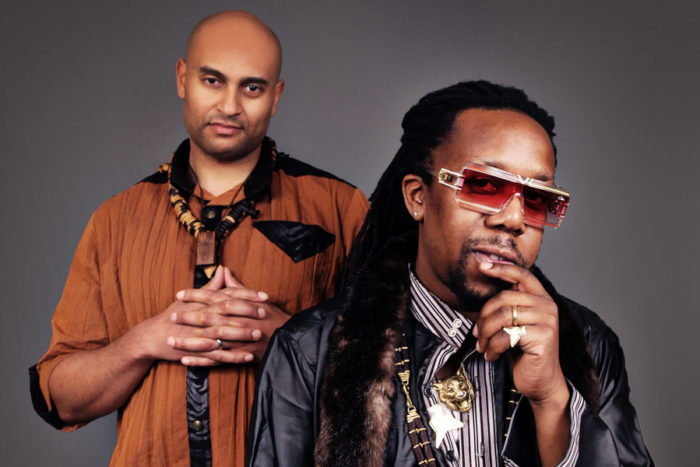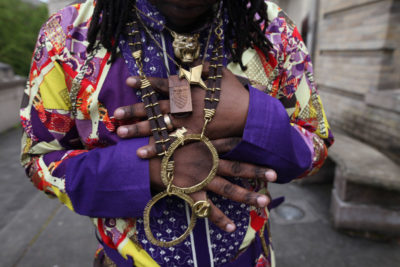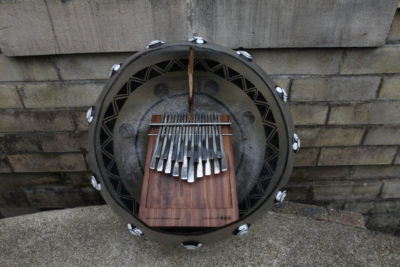
Tendai Maraire’s work as one half of Shabazz Palaces, along with his project Chimurenga Renaissance, has earned the kind of critical adoration most musicians dream of.
Maraire moved to Seattle from Zimbabwe as a small child and, along with his family, became deeply involved in both the artistic and African American communities locally.
I caught up with him earlier this month (right before he hopped a plane to L.A. to open for Radiohead) to discuss his African roots as well as his major contributions to the African Renaissances exhibit currently going on at the Seattle Art Museum.
Your hands are all over the African Renaissances exhibit going on at SAM. Tell us how that collaboration came about.

Pam McClusky from SAM had heard of me from the music and approached me to ask if I had anything to contribute to the exhibit. She said “We want to embrace what you’ve been doing with Chimurenga Renaissance and the Black Constellation collective. Can you give us elements and pieces of what you’ve done thus far?”
The exhibit is supposed to show people, “Look! This isn’t just ancient tribal art going on over here — there is groundbreaking, contemporary art coming out of Africa right now!“
Tell us about some of the featured pieces in the exhibit.

We have custom jewelry pieces and special apparel items. There’s also a mbira — a type of African instrument — that I handmade while I was in Zimbabwe. We have concept art from some of our album covers. The exhibit also features some of my collaborators: Mark Mitchell, who made the wedding outfits for my wife and I. Kyle Segal’s work is also in there, a brilliant cinematographer who filmed a series of videos while we trekked through Zimbabwe.
I’ve heard so many conflicting reports on what it’s like for African Americans to visit Africa. Everything from ‘We’re embraced with open arms’ to ‘They’re not receptive to black Americans at all… unless you’re a celebrity.’ What’s been your experience being over there?
Well, for me it’s a little different as a lot of my family is still over there. So I go over there already with a base of friends and family that embrace me. But I’ll say this: if there is a place you want to visit in Africa, just go! Anyone and everyone can be embraced there. And it’s killing a trip to Disneyland, hands down!
That may surprise some people here in the states as our media mostly shows images of African countries in some state of turmoil, political unrest or violence.
We have all that here in America too, don’t we?
*Laughs* Touche’
Our media’s portrayal of Africa is not the complete Africa. You have cities that are modern, sprawling metropolises just like anywhere over here. The other thing people don’t realize is that right now is a great time to invest in Africa. Go over there right now and invest five or ten thousand in a shop or a business of some sort. Because in 15-20 years, it’s going to be completely self-sustained — it’s not going to rely on the Western World, which has been diminishing.
Your point about Africa being self-sustained in 15-20 years is interesting. I remember reading in a few publications that the reason why Ghaddafi was taken out was the Western World got wind that he was making plans to unify all of Africa under one currency to be backed by the Libyan gold dinar.
Well, Ghaddafi had been on that for years. But other African leaders like Robert Mugabe have also been on that tip as well: to create a Pan-African dollar. It’s just that Ghaddafi got killed because of reports he was doing some questionable things with his leadership.
Any recommendations on which country to visit first?
Well, I’m biased but I’ll say Zimbabwe and its capitol city, Harare. If you can get there in the next two years while the current president (Robert Mugabe) is still in office, he is the last standing leader in any colonial-established monarchy to stand and defeat European supremacy.
So there’s no post-colonial mindset issues over there?
Oh, there’s some of that over there too — you have the younger generation, they’re on the internet — so there’s going to be some exposure to the hallmarks of imperialism that you can’t stop. But the vast majority of the people over there are knowledgeable of their roots and choose to embrace them.
“They Pray in Vain” from Chimurenga Renaissance’s 2014 debut album “riZe vadZimu riZe” is one of several of the group’s videos shot in Zimbabwe.
Tendai Maraire wants you to invest in Africa – Seattle Globalist


